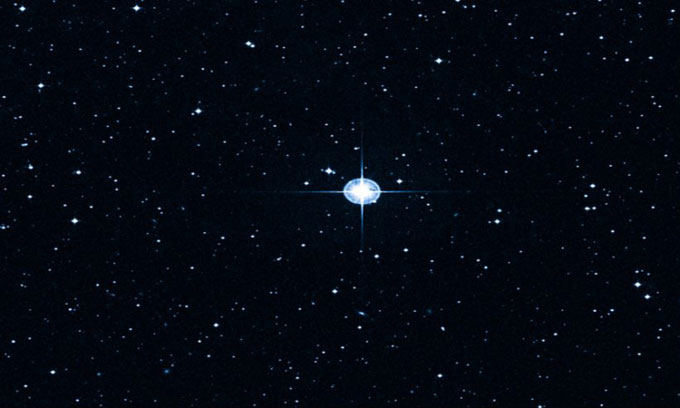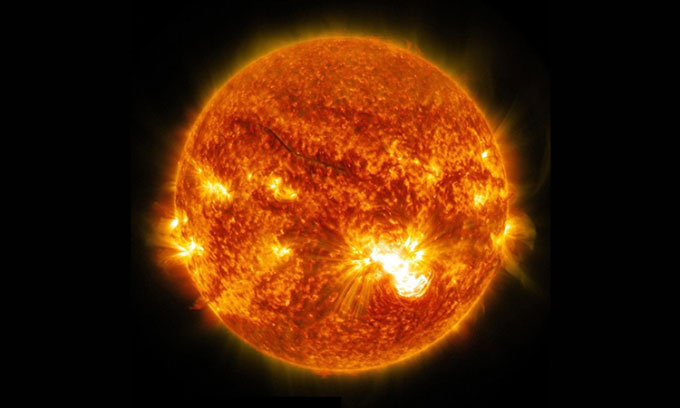The youngest stars observed are about 1 million years old, while the oldest stars could be even older than the universe itself.
Among the countless twinkling stars in the vastness of space, some are so old that they have witnessed the dawn of the universe, while others are so young that even the most powerful telescopes on Earth have yet to observe them. So, what are the youngest and oldest stars in the universe?

The Schmidt telescope of the Anglo-Australian Observatory (AAO) captures the star Methuselah in blue light. (Image: Digital Sky Survey (DSS)/STScI/AURA/Palomar/Caltech/UKSTU/AAO)
It is very challenging to determine the youngest star because stars are continuously being born. However, scientists can name several candidates among the known stars. Meanwhile, the oldest recorded star is named Methuselah.
Stars form deep within massive clouds of gas and dust known as nebulae. According to NASA, some gas clumps in these nebulae become so dense that their own gravitational force causes them to collapse (since a large mass means strong gravity). The strong gravity at the center of a collapsing gas clump causes the gas (primarily hydrogen) to accumulate into a protostar. These protostars begin to fuse hydrogen into helium and emit radiation. They are not called stars until they radiate energy and shine.
Astronomer Ruobing Dong, an associate professor in the Department of Physics and Astronomy at Victoria University (Canada), has observed such young stars. He and his colleagues published a study in the journal Nature Astronomy in 2022 about a binary protostar system believed to be only about one million years old.
Young stars are still accumulating material, which means they emit massive jets of gas from one of their ends. This indicates that they are still building up mass. As the jets fade as stars age, the amount of gas emitted helps scientists estimate the age of a star. More gas means the star is younger.

The Sun is about 5 billion years old and is expected to live for another 5 billion years. (Image: NASA/Goddard)
The estimation of the age of the star HD 140283, or Methuselah, has caused some controversy. Initial estimates from observations in 2000 suggested it was about 16 billion years old, according to NASA. That would make it older than the universe, which is estimated to be 13.8 billion years old. Astronomers immediately suspected there was an error in the method used to calculate the star’s age, or that the universe might have formed much earlier than previously thought.
To investigate further, astronomers used the Hubble Space Telescope to re-estimate Methuselah’s age in 2013. They provided an estimate of 14.5 billion years based on its brightness and distance from Earth – about 190 light-years. If so, this star would only be slightly older than the universe, although there are still uncertainties in the age estimates.
Methuselah is a subgiant star, meaning it is brighter than most stars but not as bright as giant stars. Giant stars are so large that their size seems unusual compared to their mass and temperature. Subgiant stars are also redder than giant stars.
Stars release energy by burning hydrogen in their cores and converting it into helium through nuclear fusion. Massive stars reach subgiant status when their hydrogen reserves begin to deplete. During this phase, the star’s brightness becomes an excellent means of estimating its age. Dimmer subgiant stars are older.
Methuselah has a reddish hue and gradually dims over billions of years, but its relatively close position to Earth means it is not too dim for humans and can be seen with appropriate binoculars. Meanwhile, the Sun is just under 5 billion years old and is expected to live for another 5 billion years before cooling and expanding to the point of engulfing surrounding planets, including Earth.


















































